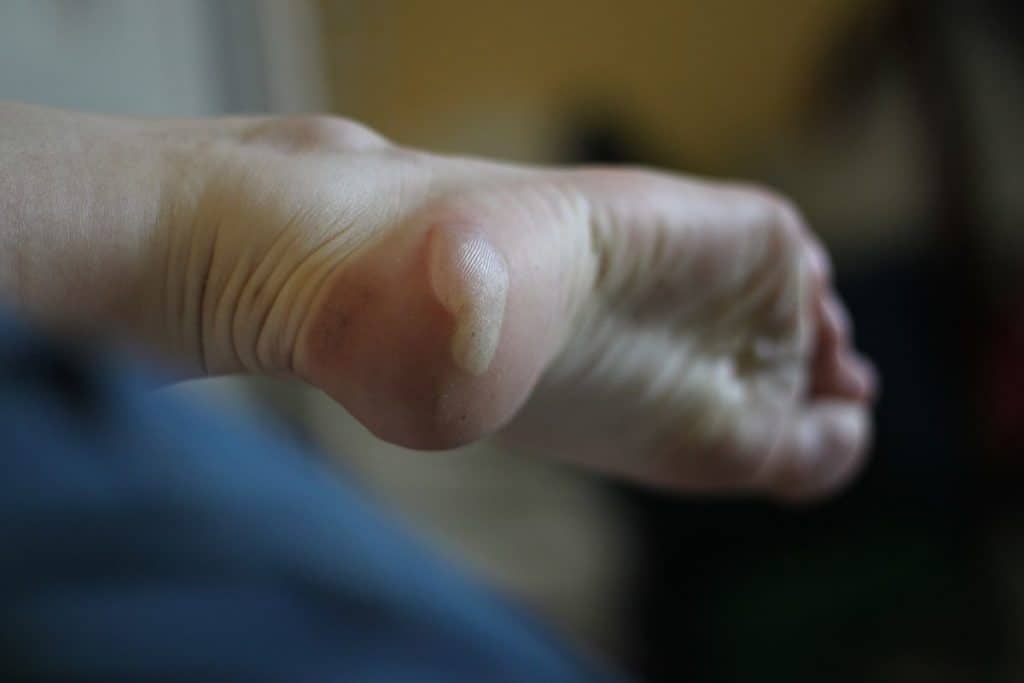While there’s nothing better than getting a shiny new pair of rugby boots before the start of a new season, there’s also nothing worse than playing in hard, stiff boots that leave your feet sore and blistered! So how do you wear in rugby boots to avoid damaging your feet?
There are five methods players typically use to wear in their rugby boots:
- Wear your boots for shorts periods,
- Use a shoe stretcher,
- Stuff your boots with newspaper,
- Stuff your boots with frozen water bags,
- Submerge your boots in warm water.
Along with looking at the ways players break in their rugby boots; we will also explore methods of reducing harm to your feet when playing in new rugby boots:
How To Break In Rugby Boots
There are five common and safe ways players use to wear in their rugby boots:
1. Wear Your Boots For Shorts Periods Of Time
Instead of taking to the field and playing a full 80 minutes in a pair of new boots, you should wear your boots for short periods (either during practice or taking a light jog for approximately 20 minutes at a time.)
Whilst it might be tempting to go shopping for a new pair of boots on the morning of the game and wear them straight away you run the risk of giving yourself a bad case of blisters.
The worse part of this is that due to the adrenlaine flowing through you during the game you won’t notice them until you take your boots off to shower later. Peeling off your socks and a layer of skin with it can keep you out of action for a couple of weeks.
It is far better to break your new rugby boots in gradually over a couple of weeks. Start by just wandering around in the garden with them for ten to twenty minutes each day.
Build this up to a more active but very casual kick about and jogging session for a few days before finally doing some full on sprints in them at home. If this goes well then you are ready for your first club training session in them.
Pro-tip: Don’t ditch your old boots just yet, keep them handy so that if you do start getting pain in your feet you can slip them back on and keep playing comfortably.

2. Use A Shoe Stretcher
Shoe stretchers are everyday items found at cobblers, tailors, and select shoe stores and are adjustable. Therefore, you can adjust the width and length to your liking and have the shoe stretcher in place without damaging your boots. It’s worth asking at the store just in case.
Recommended for you: What’s the difference between rugby and football boots?
3. Stuff Your Boots With Newspaper
Like how most new shoes come stuffed with newspaper before purchase, keeping stuffed newspaper allows your boots to take shape without overstretching them and damaging the material.
Screw sheets of newspaper up into tight balls and stuff them as far as you can into the boots. Pack the boots as best as you can and then leave them overnight.
The effect of this is that the boots will ‘learn’ a slightly bigger shape and make them less rigid which is good news for reducing blisters and increasing boot flexibility.
4. Stuff Your Boots With Frozen Water Bags
Similar to stuffing your boots with newspaper, placing an airtight plastic bag filled with water in your boots allows the water to shape itself perfectly to the size and design of your boots.
Once done, place your boots and the water bags together in the freezer, thus allowing the water to freeze and help stretch out the boot, (note: be cautious in overdoing this technique, as excessive cold temperatures can damage the different materials of the boots!)
In all honesty, this seems like a bit too much effort to go to but apparently it works well.
5. Submerge Your Boots In Warm Water
Finally, players can put on their boots and submerge them in lukewarm water for short periods. Submerging the boots in warm water allows the material to soften and mold itself to the shape of your feet.
However, this method must be used sparingly, as excessive soaking can damage the different materials of your boots!
Soaking the boots in warm water and then walking around in them also wears them in very quickly.
Overall, my personal preferred method of wearing in new boots is method one, to simply walk around in them and gradually start using them more and more but with the old pair close at hand in case of discomfort.
You might also like: Rugby Boot Rules Made Simple and How To Choose Rugby Boots
How To Avoid Blisters When Wearing New Rugby Boots
There are two common and safe ways players use to reduce sore feet and avoid blisters when wearing new rugby boots:
- Wearing An Extra Pair Of Socks
Along with a pair of rugby socks, you should wear an extra pair of heel socks when wearing new rugby boots; this additional barrier between your ankle and the boots’ heels significantly reduces your chance of developing blisters. - Use Petroleum Jelly
A method of further friction reduction is to rub your back heel and underside of your toes with petroleum jelly before putting on your socks and boots. Just be careful not to apply too much, as this can be very uncomfortable and potentially cause you to lose your footing!
Conclusion
In conclusion, with some planning, wearing a new pair of rugby boots does not have to be an uncomfortable and painful experience. Instead, different methods of breaking in your boots allow players to take to the field with maximum confidence!
Remember, rugby is a great sport and you get out of it exactly what you put in, on and off the pitch, so, get involved!
You might also be interested in: How To Clean Rugby Boots Effectively?
